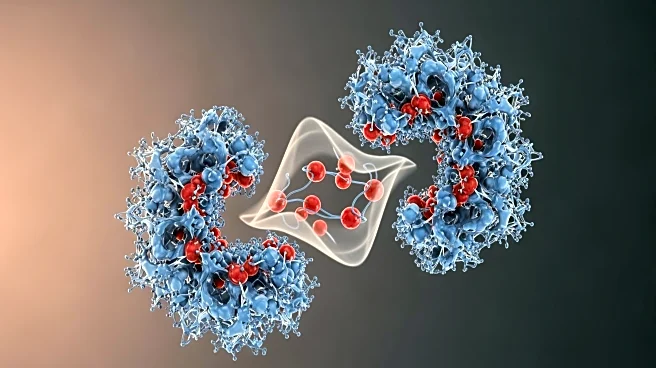What's Happening?
Recent research has led to the construction of HEK293 cell lines expressing near-endogenous levels of Flag-tagged subunits of various complexes involved in protein synthesis at the endoplasmic reticulum (ER). These include OST-A, GEL, PAT, and BOS complexes.
The study utilized ribosome profiling to identify cotranslational interactions and determine the enrichment of transcripts encoding proteins with long translocated segments. The findings reveal that OST-A is recruited during translocation of long segments through the open Sec61 channel, while MPT complexes engage with closed Sec61 channels. This research provides insights into the dynamics of protein synthesis and the role of different complexes in cotranslational N-glycosylation and multipass membrane protein biogenesis.
Why It's Important?
Understanding the mechanisms of protein synthesis at the ER is vital for advancements in biotechnology and medicine. This research could lead to improved methods for producing therapeutic proteins and understanding diseases related to protein synthesis errors. The ability to map cotranslational interactions offers potential for developing targeted treatments for conditions involving protein misfolding and aggregation. The study's findings could also impact the pharmaceutical industry by enhancing drug development processes that rely on protein synthesis and modification.
What's Next?
Further research is expected to explore the implications of these findings for drug development and disease treatment. Scientists may investigate how manipulating these complexes can improve the efficiency of protein synthesis and address diseases caused by protein synthesis defects. Collaboration with pharmaceutical companies could lead to the development of new therapies targeting specific protein synthesis pathways.
Beyond the Headlines
The study highlights the complexity of protein synthesis and the intricate interplay between different cellular components. Ethical considerations regarding genetic manipulation and the use of cell lines in research will continue to be a topic of discussion, particularly in the context of developing new medical treatments.













